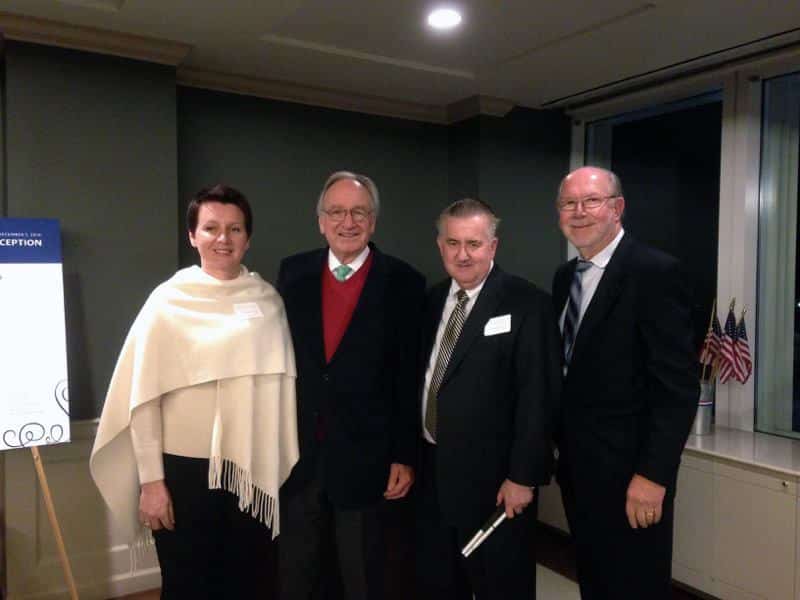
U.S. Census figures reveal that nearly 1 in 5 Americans live with a disability.
However, disability doesn’t respect boundaries.
One billion people — or 15 percent of the world’s population — have some form of disability, according to the World Bank, and disability prevalence soars in developing countries.
That reality underscored the recent inaugural Harkin International Disability Employment Summit last month in Washington D.C., convened by Harkin Institute for Public Policy & Citizen Engagement — named for former U.S. Sen. Tom Harkin, the Iowa Democrat who sponsored the Americans with Disabilities Act.
The invitation-only event gathered more than 100 influential guests from 22 countries who share the common goal of boosting competitive employment opportunities for people with disabilities. The summit aimed to develop strategies to bolster job prospects and dignity while reducing poverty and the prospect that people living with disabilities also would live a life supported by government and charity.
Dr. George Hagerty, president of Beacon College — the first college or university accredited to award bachelor’s degrees primarily to students with learning disabilities, ADHD and other learning differences, was among the attendees. He reflects below on the summit.
Q: What was the purpose of the summit?
Senator Harkin and his colleagues at the Harkin Institute for Public Policy and Citizen Engagement wanted to convene global leaders and advocates to confront the historic issue of under- and unemployment among the community of people with disabilities. If we just look in our own backyard, the state of Florida, a recent Chamber of Commerce study indicates that 700,000 of those with disabilities who reside in the Sunshine State are either unemployed or underemployed. This pattern of lost potential and productivity is unfortunately a constant worldwide, as reported by the 175 delegates representing 35 countries who were invited to attend the summit.
The goal of this first gathering is to set a meaningful, practical agenda upon which governments, corporations, non-governmental agencies, and advocacy networks can agree to take shared action within and across borders. Such an agenda Senator Harkin fervently believes can foster the consequential action that will lead to the tangible improvement of employability and worthy work for people with disabilities.
Q: How large a problem globally is workforce inclusion of persons with disabilities?
One could not be part of the Harkin Summit experience — whether involved in large group plenary or thematically-focused breakout sessions — without profoundly being influenced by the scope and consistency of the issues across borders and continents. The numbers in Florida are both sobering and shameful, and we are privileged to be in a country of wealth and a significantly advanced public policy arena. The magnitude of the problem of unemployment in lesser developed countries (in which, by the way, learning differences are many times perceived as “luxury-level disabilities”) is striking. Nonetheless, whether in more or lesser developed countries, discrimination against individuals with disabilities, both in the education and employment sectors, ensure that these individuals are more likely to be poor, marginalized from the larger society, and quite disillusioned with respect to their prospects.
Q: What were the dominant issues the summit identified?
It was quite evident from the formal and informal conversations that unfolded over the course of the summit that three significant issues frustrated the nations represented. There is some “chicken-and-egg” dynamic inevitable when considering these themes, but I was encouraged that the clear majority of delegates really did view these matters holistically.
Likely the most prominent issue surrounds access to employment, which demands that employers — whether in the public or private arena — welcome and, if necessary, reasonably accommodate the simple desire of people with disabilities worldwide to participate in worthy work.
The second most dominant area of discussion related to the preparation of people with disabilities for the 21st Century workforce. This included dialogues among participants focusing on entrepreneurship as well as small and large businesses.
I found the third most prominent theme to be quite inspiring: that is the active engagement of individuals with disabilities themselves in all decisions, but particularly in the structuring of employment-related policies, training, and service networks.
Q: Did the summit address higher education? If so, what is the biggest challenge and greatest opportunity in that area?
Certainly, education was a dominant theme of the Harkin Summit. In the United States, with our relatively sophisticated economy, higher education plays a dominant role in policy and business discussions pertaining to the employment of individuals with disabilities. For many of the developing countries, the main concern at this point is on what we would call the K-12 system (primary and secondary schooling). However, when Beacon was introduced in sessions, irrespective of the country from which the delegates were drawn, there was immediate and significant interest in an undergraduate model that is successful and could be transportable across borders to train prospective managers, teachers, and scientists.
We offered to share whatever we know about the undergraduate preparation of students with disabilities — an offer that we believe will be embraced over the course of the next year, as the Harkin Institute staff begin to frame the global agenda that is the intended outcome of the first summit.
Q: What was your biggest takeaway from the summit?
It was clear to me that the greatest frustration for delegates was the knowledge that there are many promising innovations that foster a sound transition to employment for people with disabilities. These innovations exist on every continent. Nonetheless, the problems of access and persistence for those many seeking worthy work remains, even though there are innovative and effective systems and strategies in place in most nations. It seems, however, that these model programs and innovations are delivered in isolation — without the ripple effect in the broader community that we would naturally expect.
The Harkin Summit is an effective beginning to the sharing of information on the best practices that will topple the barriers to effective training and the equal access that are essential to the employment of individuals with disabilities.